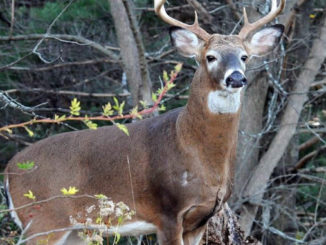
To the editor:
The June 5 meeting to develop a county-wide regional approach to deer management should never consider any type of deer hunting (“Meeting May Forge Deer Control Strategies”— April 22, 2019). Lethal deer management endangers us all and does not control wildlife populations, despite what the hunter-backed state agency, the New Jersey Division of Fish and Wildlife (DFW) would have you believe. In addition, hunting causes property values to decline and taxes to go up. Nonlethal deer conflict management is both effective and humane.
When polled, the majority of people want nonlethal deer management. The League of Humane Voters of NJ (LOHVNJ) currently has over 1,000 petition signatures from Bergen County residents alone who are against deer hunting. Representatives from LOHVNJ staff tables every weekend throughout the region and interact with people who are outraged that hunting is even considered in one of the densest counties in the state. Towns such as Saddle River are undermining nonlethal efforts throughout our county.
Bergen County Executive Jim Tedesco has consistently responded positively to the residents by pledging that county parks remain safe for deer.
The DFW, which is scheduled to present at the June 5 meeting, is largely funded through the sale of hunting licenses, so it is incentivized to promote hunting. At previous meetings, DFW representatives misled the public by deliberately overstating the dangers of Lyme Disease, and human/deer collisions. In fact, Lyme disease experts have debunked the connection to deer and the risk of collisions can be mitigated. Nonlethal methods of population control have been proven to be far superior, and hunting is demonstrably not safe.
Hunters in the US and Canada accidentally shoot approximately 1,000 people every year, with fatalities close to 10%, according to the International Hunter Education Association. The injuries and deaths affect both hunters and non-hunters, endangering the entire community.
Bow hunting has a 50% wounding rate and injured deer can run onto roadways, increasing the risk of deer-auto collisions. It is also inhumane and ineffective, causing extreme suffering to deer.
Current state regulations provide only a 150 feet safety zone for bow hunters (arrows travel 184 mph). Hunting sends wounded animals onto residential properties to leave behind pools of blood, traumatizing residents. Razor-tipped arrows fall into bushes and in grass where children can find them.
Deer respond to a hunt with increased fertility, producing more twins and triplets, and a larger proportion of female fawns that will further increase the deer population. At best, hunting provides a short-term answer, requiring a perpetual killing program. Essex County’s deer hunt is over a decade old, having started in 2008, and costs taxpayers over $1.7 million.
There are a variety of nonlethal deer control methods that have worked throughout the country. These include birth control, reducing food sources (no feeding), scare tactics, eliminating invasive plants and higher fencing. Factors that influence the number of deer-auto collisions such as lighting, signage, and reduction in speed limits are far more impactful on driver safety than a deer hunt.
LOHVNJ is available to do a nonlethal wildlife presentation and we have worked successfully with many communities. Our organization looks forward to hearing from any town official who is concerned about deer, we will work vigorously against the re-election of any politician who supports hunting in our community. For inquiries, please contact info@lohvnj.org.
Julie O’Connor, Ph.D.
Tenafly
The writer is regional legislative district director for League of Humane Voters of New Jersey



